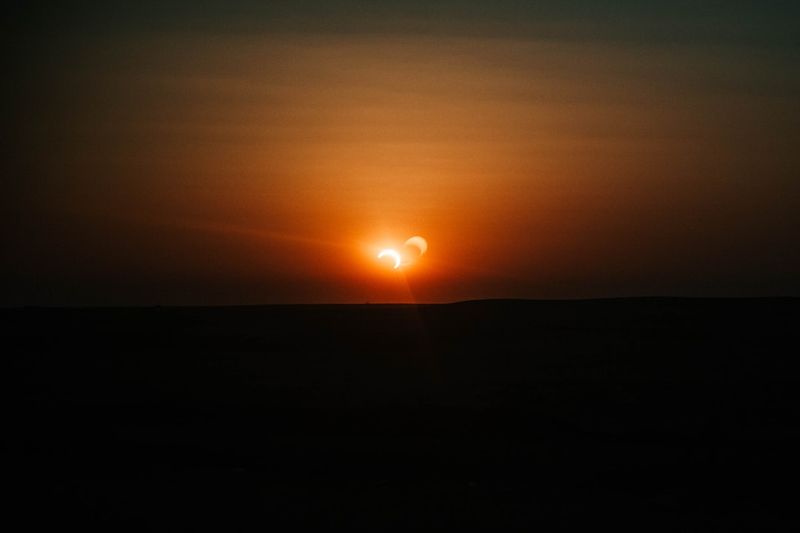What to Know About Saturday’s ‘Ring of Fire’ Solar Eclipse
Introduction
On Saturday, millions of people in the Americas will have the opportunity to witness a celestial spectacle: a solar eclipse where the moon passes in front of the sun. This particular eclipse, known as an “annular solar eclipse,” will create a breathtaking sight resembling a ring of fire. In this report, we will delve into the details of this event, including what causes it, its path of visibility, and how to safely observe it.
An Explanation of an Annular Solar Eclipse
A solar eclipse occurs when the moon aligns between Earth and the sun, partially or completely obscuring the sun’s face from our perspective on Earth. The eclipse happening on Saturday is specifically an annular solar eclipse, which takes place when the moon is at or near its farthest point from our planet. Unlike a total solar eclipse, where the moon completely blocks the sun, an annular eclipse leaves a ring-like appearance as the moon is too far from Earth to fully cover the sun’s larger, bright face.
The Path of Visibility
The annular solar eclipse will be visible along a path that covers parts of the United States, Mexico, Central America, and South America. The maximum obscuring of the sun will be seen in states such as Oregon, California, Nevada, Utah, Arizona, New Mexico, and Texas. The path then extends across Mexico, Guatemala, Belize, Honduras, Nicaragua, Panama, Colombia, and Brazil, ultimately ending at sunset in the Atlantic Ocean. However, people in larger parts of North America, Central America, and South America will still witness a remarkable sight, albeit with less obscuring of the sun.
The Size Comparison of the Earth, Moon, and Sun
To understand why the moon appears to almost cover the sun during an eclipse, it is important to consider the sizes of these celestial bodies. While the moon is significantly smaller than the sun, it appears larger in the sky because it is much closer to Earth. The moon’s diameter measures around 2,159 miles (3,476 km), while the sun’s diameter is approximately 865,000 miles (1.4 million km), and Earth’s diameter is 7,918 miles (12,742 km).
The Safest Way to Watch an Eclipse
Observing a solar eclipse directly without proper eye protection can be extremely dangerous and can result in eye injuries. Since an annular solar eclipse never fully blocks the sun, it is vital to use specialized eye protection designed for solar viewing. This includes safe solar viewing glasses or a safe handheld solar viewer. It is crucial to note that regular sunglasses do not provide adequate protection for viewing the sun. Looking at the sun through a camera lens, binoculars, or telescope without a special-purpose solar filter can also cause severe eye damage.
Differentiating Between Solar and Lunar Eclipses
Solar and lunar eclipses are both fascinating celestial events, but they differ in their occurrence and visibility. A solar eclipse happens when the moon passes between the sun and Earth, blocking the sun’s light. In contrast, a lunar eclipse occurs when Earth comes between the sun and moon, casting our planet’s shadow on the moon’s surface. While solar eclipses are visible along a narrow path on Earth, lunar eclipses can be observed from a much wider area.
Conclusion
Saturday’s annular solar eclipse presents a remarkable opportunity for skywatchers across the Americas to witness a captivating celestial display. However, it is crucial to prioritize safety and observe the eclipse using specialized eye protection. As with any natural phenomenon, an eclipse provides us with a chance to contemplate the vastness of our universe and the intricacies of its celestial bodies. So, let us marvel at this cosmic event and appreciate the wonders that unfold above us.

<< photo by Caseen Kyle Registos >>
The image is for illustrative purposes only and does not depict the actual situation.
You might want to read !
- Alaska Earthquake: Rattling the Ground and Raising Tsunami Concerns
- “Celebrating Mexican Independence Day 2023: An Ultimate Guide to Commemorating Freedom and Culture”
- “Scientists Expose Alleged Extraterrestrial Fraud: Unveiling the Secrets behind the Claims”
- “Exploring the Spectacular Sights of the Newly Discovered Green Comet”
- “Shining Bright: The Mystical Splendor of the Last Super Blue Moon until 2037”
- “Why is the strawberry moon named so, and what makes it special?”
- Exploring the Phenomenon of the Strawberry Moon and Its Occurrence This Weekend
- The Green Comet: A Celestial Spectacle and a Window into Our Solar System’s Past
- “Captivating Images of the Rare Super Blue Moon You Missed Last Night”




